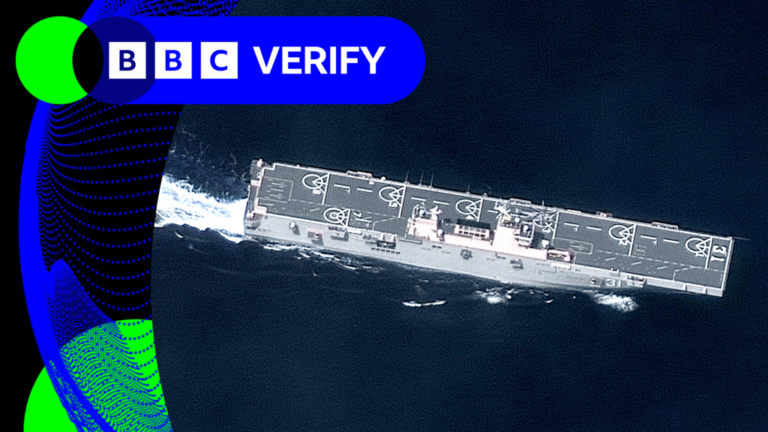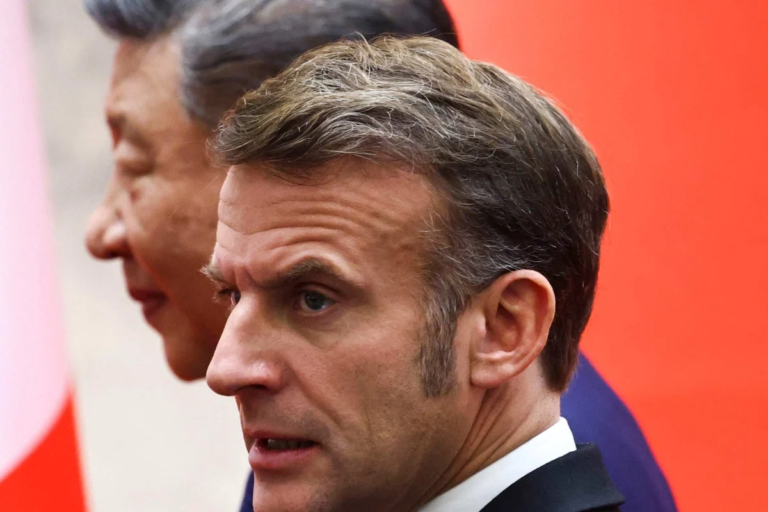
The failed launch and potential ruin of North Korea’s 5,000-ton warship highlighted the Kim Jong Un regime’s difficulty meeting its defense modernization pledges.
Pyongyang’s leader watched in late May 2025 as its newest 143-meter-long vessel floundered and capsized during a botched sideways launch in the northeastern port city of Chongjin. As crews pushed the vessel toward the water, its bow stuck on the shipway from which it was supposed to slide, and the ship’s hull was crushed, North Korean state media reported.
The vessel ended the day partially submerged in the shipyard, covered in tarps to shield Kim’s embarrassment from satellite imagery. Kim blamed the disaster on carelessness and had at least four shipyard officials arrested. Analysts said the misstep probably resulted from the shipyard’s lack of experience and Kim’s demand for quickly building warships.
The Hambuk Shipyard has not previously manufactured large vessels, according to a report from the United States-based Center for Strategic and International Studies (CSIS). North Korea likely had never attempted a sideways launch for a ship of the destroyer’s size, analysts said. When successful, such a launch plunges the vessel into the water lengthwise, with the ship tilting dramatically before righting itself.
The failed maneuver is only one of Kim’s problems. Experts say his efforts to develop nuclear weapons — in violation of United Nations Security Council resolutions and for which the repressive regime has faced years of sanctions — left the rest of North Korea’s military underfunded, with inoperable jets, tanks and ships, The Wall Street Journal newspaper reported. Now, the dictator is rushing to update his military “in the shortest time possible.”
His urgency stems from a singular motivation to maintain power over the totalitarian state established by his grandfather in 1948. Kim, however, attempts to justify his illegal nuclear ambitions by accusing South Korea and its longtime treaty ally, the U.S., of threatening conflict. The Allies signed a mutual defense agreement after the North’s 1950 invasion of South Korea instigated a three-year war that killed at least 2.5 million people on the peninsula. Seoul and Washington continue building deterrence against a future North Korean attack with strategic asset deployments, combined military exercises and growing defense interoperability.
Meanwhile, Kim will likely keep demanding unrealistic timelines for new ships and other assets, according to military observers. North Korea’s state media has claimed the damage to the ship in Chongjin is not as serious as initially feared and reported that repairs could be complete in June 2025. Experts doubt that. Analysts told the CNN news outlet that pulling out the sunken half of the warship could irreparably damage the vessel and that salvaging it could require cutting the ship into pieces.
Before the unnamed destroyer sank, Kim managed a more traditional launch and weapons test with a similar destroyer from North Korea’s west coast port in Nampo, although analysts said it wasn’t clear whether the vessel moved on its own or was towed. The North relies heavily on propaganda as it tries to convince the world of its ability to modernize an aging Soviet-era fleet, Joseph Bermudez Jr., a senior fellow at CSIS, said on a research center webinar.
“They’re showing you something because they want you to believe something,” he said. “It isn’t always the truth.”





